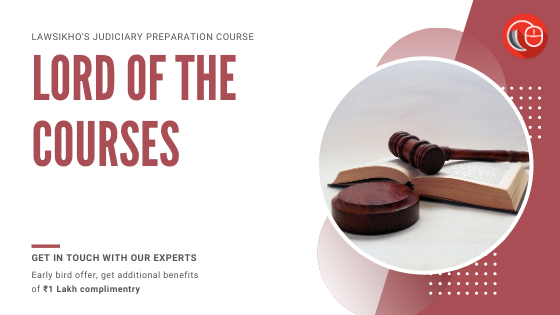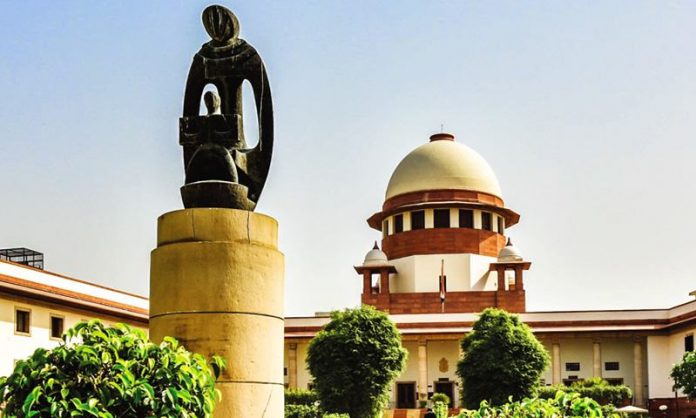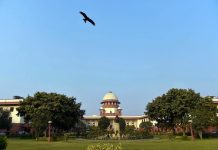This article is authored by Akash Krishnan, a student from ICFAI Law School, Hyderabad. It discusses in detail the recent attack on a Sessions Judge in Bihar and the applicable penal provisions in this regard.
Table of Contents
Introduction
Judiciary is one of the most important pillars of a democratic society and the smooth functioning of the judicial mechanism is necessary to ensure that justice prevails at all costs. Imagine a world where judges are mere pawns of the people in power or a world where the judges are afraid to take the right decision because of threats to their life. This situation might become a reality if the judiciary and the judges are not protected against deterring external factors.
Recently, a Sessions Judge in Bihar was attacked by two policemen inside the courtroom while the court was in session. What is more shocking in this case is that the enforcers of justice had attacked the protectors of justice. With this background in mind, let us try and understand what happened in this case and which penal provisions are attracted for such heinous acts.
Attack on the Sessions Judge in Bihar
- On 18th November 2021, two policemen entered the courtroom of the Additional District and Sessions Judge of Jhanjharpur, Bihar, Mr. Avinash Kumar and attacked him. It is also alleged that the policemen pointed a gun at him during the incident. It is further alleged that the two policemen also attacked and injured the advocates and the courtroom officials who came to the defence of the Sessions Judge. The two policemen have been identified as the Station House Officer of the Jhanjharpur police station, Mr. Gopal Krishna and a sub-inspector of the same police station, Mr. Abhimanyu Kumar. It is pertinent to note that no serious injury had been caused to the Sessions Judge or any of the advocates and courtroom staff.
- In light of this incident, the Hon’ble High Court of Bihar took suo-moto cognizance of the matter and issued a direction to the Director-General of Police of Bihar to file a status report within 10 days at the next scheduled date of the hearing, i.e., on November 29th 2021.
- The brief order passed by the Court termed the incident as unprecedented and shocking and called it an attack not only on the Additional Sessions Judge but also on the independence of the judiciary. In light of the same, the Court had ordered for the imprisonment of the 2 police officers till the next hearing. However, it is pertinent to note that the reason behind the attack has not been revealed yet.
- In an immediate response to the attack, the Vice President of the Bar Association of Jhanjharpur termed the incident as an attempt to suppress the judiciary. He also questioned the role of the District Superintendent of Police (DSP) in this regard because the Additional Session Judge had on multiple occasions criticised the actions taken by the DSP. The lawyers of the Bar Association demanded a judicial inquiry and threatened to agitate if the judicial inquiry was not conducted.
Now that we have understood the background of the case, let us try and understand which penal provisions of the law are applicable to the present case.
Penal provisions involved
Contempt of Courts Act, 1971
Criminal contempt
Section 2(c) of the Contempt of Courts Act defines criminal contempt. It means the publication of any material or the doing of any act which:
- Scandalises or lowers the authority of any court.
- Is prejudicial to the proceedings of any court.
- Interferes or tends to interfere with the proceedings of any court.
- Obstructs or tends to obstruct the administration of justice in any manner.
The term scandalising the authority of the court was explained in the case of Hari Singh Nagra v. Kapil Sibal (2010). The Supreme Court observed that the term scandalising means an attack on the credibility or character of the judges by publishing or making unwarranted and defamatory remarks about the judges. It is not necessary that the comments are directed against any specific case or any specific judge. The factor that has to be considered is whether the comments can be deemed to undermine the authority of the judiciary as a whole and whether the comments can shake the confidence of the public in the judicial system.
The term prejudicial to the proceedings of the court was explained in the case of In Re P.C. Sen (1968). The Supreme Court observed that if any person makes a speech or publishes any material that is false for prejudicing the minds of the public against the parties of the case or with the intent of influencing the outcome of a trial, then such an action would be deemed to be contempt of the court.
The term obstructing the administration of justice was explained in the case of Delhi Judicial Services Association v. the State of Gujarat (1991). Herein, the Supreme Court held that any attack on the presiding officers of the court with the intent of restricting them from discharging their lawful duties would amount to criminal contempt.
Cognizance of criminal contempt
Under Section 15 of the Contempt of Courts Act, the Supreme Court or the High Court is empowered to initiate criminal contempt proceedings either suo-moto or on an application filed by the Advocate General of India or any other person who is filing the application with the consent of the Advocate General of India.
This provision was examined and explained in the case of In Re Prashant Bhushan (2021). In this case, the Supreme Court observed that the Court is empowered to initiate suo-moto proceedings under Section 15 of the Contempt of Courts Act and it does not have to seek the permission of the Attorney General of India in this regard because the power to initiate contempt proceedings is an inherent power vested in the Supreme Court and the High Courts. Once the Court takes cognizance of the matter, the only two parties in the dispute would be the Court and the contemnor and the Court has to ensure that the principles of natural justice are followed during the hearing.
Hearing of the case
Section 18 of the Contempt of Courts Act states that the cases of criminal contempt should be heard and determined by a bench of a minimum of two judges.
Limitation
Section 20 of the Contempt of Courts Act states that contempt proceedings cannot be initiated against the contemnor after the expiry of 1 year from the date of the incident.
Punishment for contempt of court
Section 12 of the Contempt of Courts Act states that any person who is found guilty of the offence of contempt of court shall be punishable with imprisonment that may extend to 6 months or with a fine that may extend to ₹2,000 or both.
Indian Penal Code, 1860
Assault on a public servant
Section 353 of the Indian Penal Code states that any person who assaults a public servant and uses criminal force against such public servant with the intent of deterring or preventing the public servant from executing his legal duties shall be punishable with imprisonment that may extend to two years or with fine or both. This is a non-bailable offence.
Punishment for causing voluntary hurt
Voluntary hurt has been defined under Section 321 of IPC as any action committed by any person with the intent of causing harm to any person. The punishment for voluntarily causing hurt has been prescribed under Section 323 of IPC as imprisonment that may extend to one year or a fine that may extend to ₹1,000 or both.
Applicability of penal provisions in this case
The present case would come under the ambit of criminal contempt because the Sessions Judge was attacked in the courtroom while legal proceedings were going on. Thus, in light of the precedent laid down in Delhi Judicial Services Association v. the State of Gujarat, the same would amount to obstruction of the administration of justice and therefore fall under the ambit of criminal contempt. Also, the acts of assaulting a public servant and voluntarily causing him to hurt are offences that are punishable under the Indian Penal Code. Thus, while determining the punishment the Court will have to read Section 12 of the Contempt of Courts Act along with Section 353 and 323 of the Indian Penal Code.

A similar incident in Bihar
In October 2020, a similar incident had occurred in Bihar. The District Judge of Aurangabad, Bihar, Mr. Dinesh Pradhan was allegedly threatened and assaulted by a Sub-Inspector of the Bihar Police along with some Central Reserve Police Force (CRPF) officers while he was on an evening walk.
A Public Interest Litigation (PIL) for initiating criminal contempt proceedings against the accused was filed in the Supreme Court of India. The following averments were made in the PIL:
- The attack was a result of a personal grudge as the District Judge had taken actions against the sub-inspector earlier for dereliction of duty.
- The Bihar Judicial Services Association had written a letter to the DGP in this regard but no action was taken by him.
- The Court should direct the institution of an FIR against the sub-inspector and the CRPF officials and should also take an action against the DGP for not initiating an investigation into the matter on the receipt of the letter.
- If judges are not protected against such atrocities, the people in the state cannot feel safe. Thus, the Court should take into consideration the larger public interest involved in the matter.
The Supreme Court noted the averments made under the PIL and asked the petitioner to include the names of the sub-inspector and other CRPF officials in the PIL. The petitioner agreed to the same and stated that he would amend the PIL and include the name of the sub-inspector only because the identity of the CRPF officials was not known. The Court also directed the Police to carry out a preliminary investigation into the matter and submit a report regarding the same.
The Supreme Court in February 2021, dismissed the PIL on two grounds, i.e., firstly the petitioner failed to include the name of the sub-inspector and secondly, the investigation report submitted by the Bihar Police stated that the attack never happened. The silence of the District Judge in this matter also played a crucial role in the dismissal of the PIL.
Conclusion
The very existence of the judiciary depends on its independence. If the judiciary cannot act independently and is forced to act in a certain way, it is impossible that justice will be delivered in all cases. For justice to be done, it is imperative that the judges are protected from such incidents and are allowed to act in a free and fair manner. Therefore, the Bihar High Court should take this matter seriously and set a deterring precedent so that such incidents do not occur in the future.
References
- https://www.scconline.com/blog/post/2021/03/16/criminal-contempt-of-courts/
- https://www.ndtv.com/india-news/policemen-attack-judge-in-bihar-court-hc-asks-dgp-to-file-status-report-2616573
- https://theprint.in/judiciary/after-policemen-attack-bihar-judge-in-office-furious-patna-hc-asks-dgp-to-file-report/768325/
LawSikho has created a telegram group for exchanging legal knowledge, referrals and various opportunities. You can click on this link and join:
Follow us on Instagram and subscribe to our YouTube channel for more amazing legal content.
 Serato DJ Crack 2025Serato DJ PRO Crack
Serato DJ Crack 2025Serato DJ PRO Crack










 Allow notifications
Allow notifications



